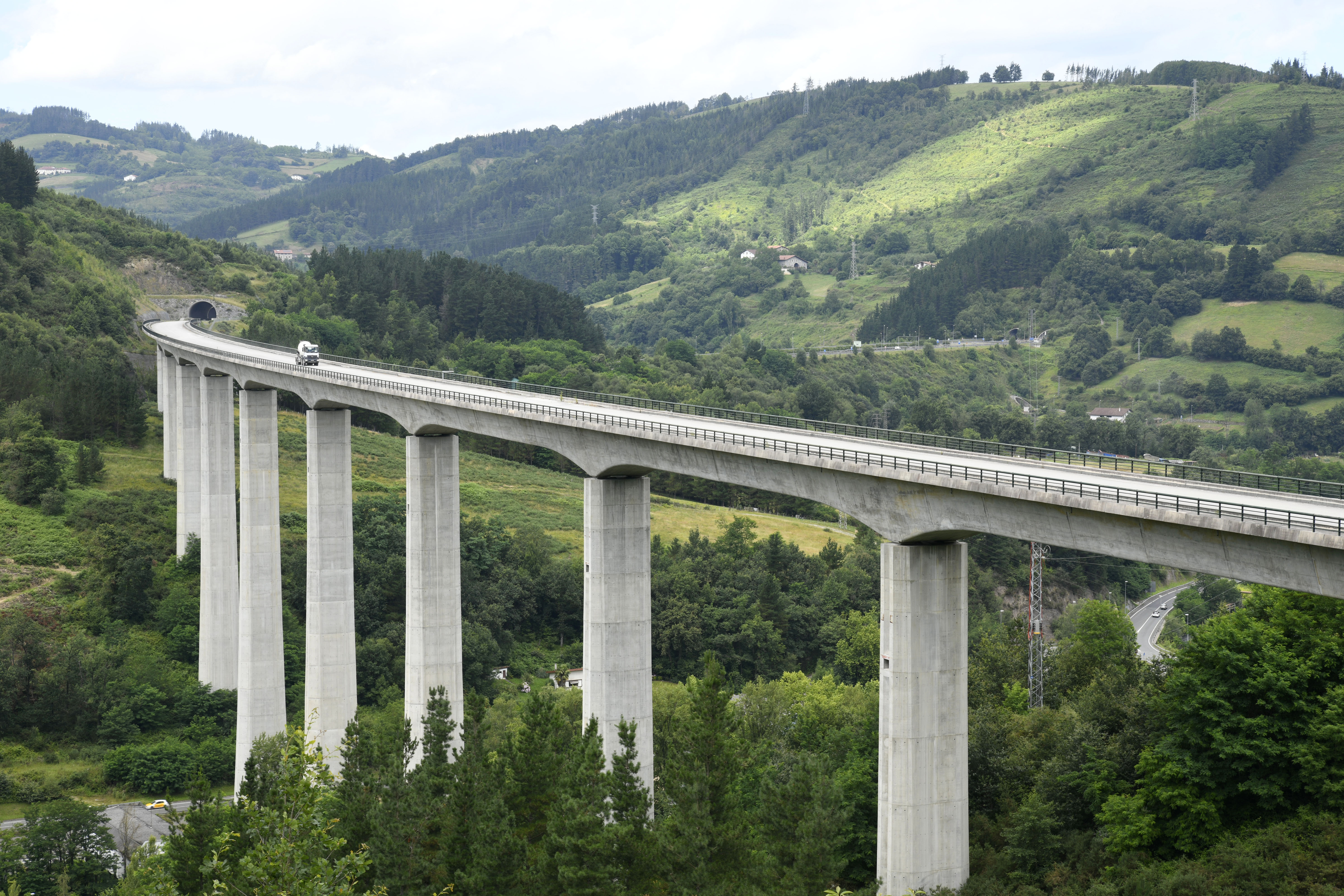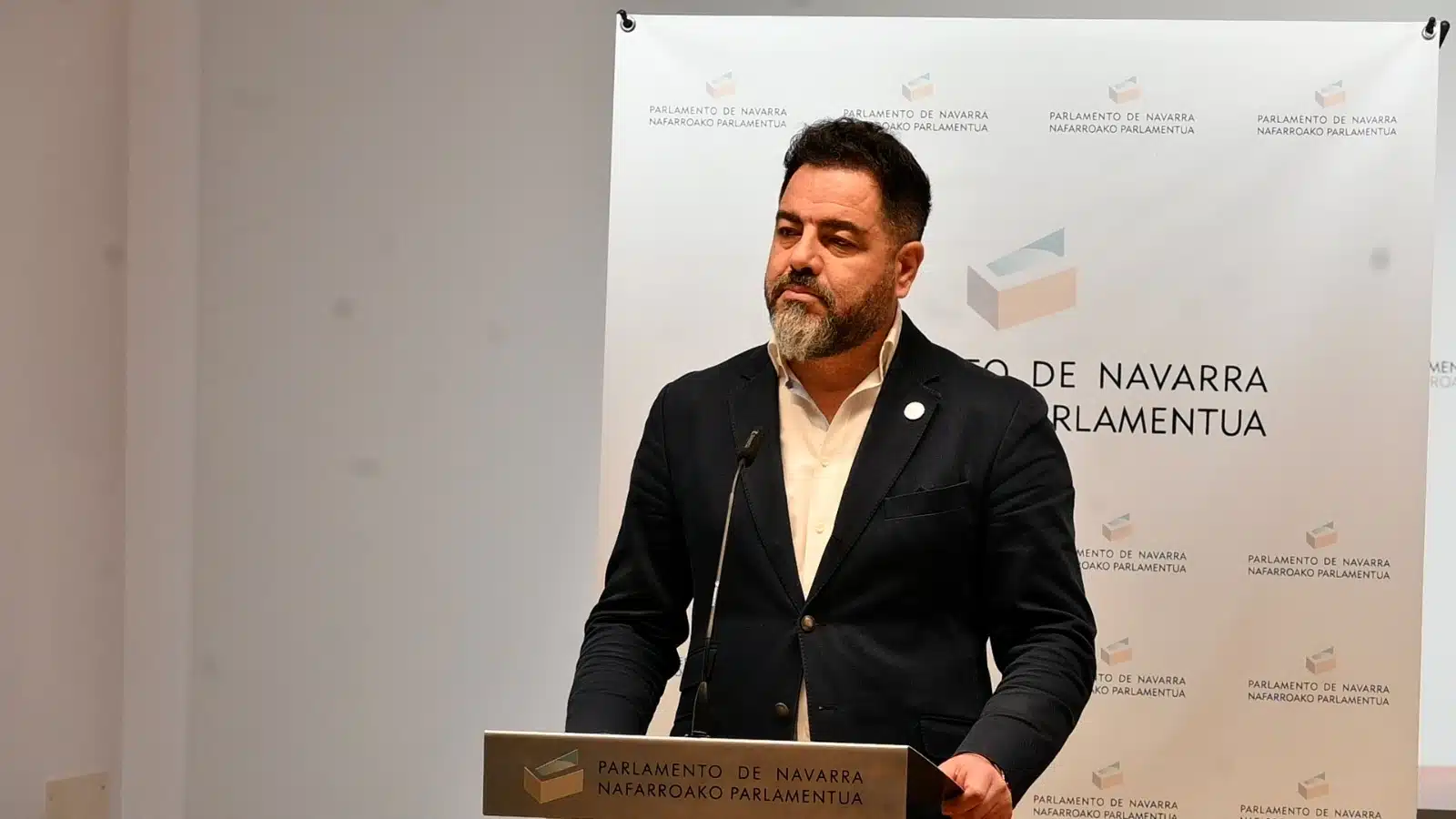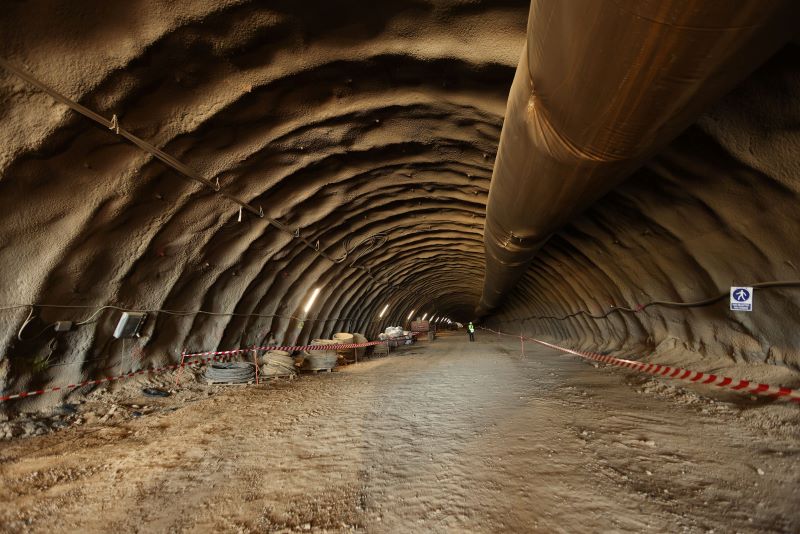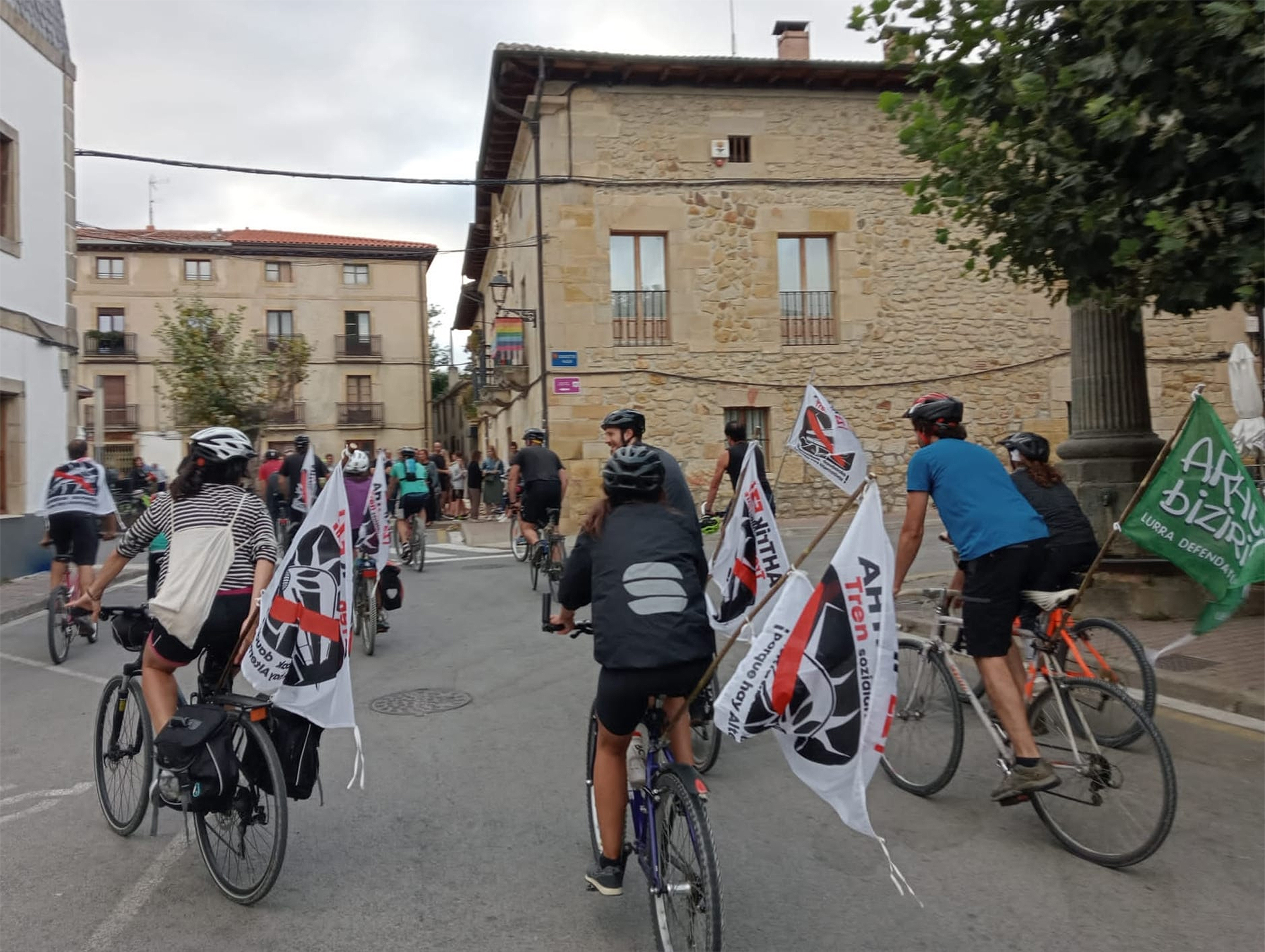Ineffective, unjust and unbearable
- In this year’s report, UPV/EHU teachers David Hoyos, Andoni Kortazar and Gorka Bueno have analysed in depth the high-speed network of the Spanish State. The conclusions are very negative and this article published on the web The Conversation explains why. At the same time, and with a view to reducing greenhouse gases, they claim that this train model is an obstacle rather than a support.

In 2022, it is 30 years since the first high-speed line was launched in Spain, Madrid-Sevilla. After investing more than EUR 56 million in the second largest network in the world (3,086 km), the social, economic and environmental arguments of the Spanish model of high-speed train (TAV) have disappeared in the light of the accumulated scientific evidence.
The climate emergency has highlighted the lack of purpose of high speed in Spain. It is urgent to rethink the Spanish transport policy with concrete and credible measures, in line with the climate commitments of the Paris Agreement.
The year 2021 was declared
by the European Commission as the European Year of Rail as the central axis of sustainable mobility. Promoting more sustainable modes of transport has been one of the priorities of European policy since the end of the last century. The aim is to marry with the unstoppable growth in passenger and freight transport and with increasing social, environmental and economic damage.
The railways are essential in this new transport policy and take on a special role in the Spanish case through massive investments in the high-speed train.
Paradoxically, between 1990 and 2018, the modal share of rail has increased from 7% to 6% in passenger transport and from 10% to 4% in freight transport. It is therefore not surprising that, during the Kyoto Protocol, transport is the only sector that has increased its greenhouse gas emissions (+73%). Today, transport emissions account for 31% of the total.
Ineffective in the economic sphere, unfair in
the social sphere according to the economic evaluation of the Spanish high-speed model, the built corridors do not have financial and social profitability. In other words, society will never recover the money invested.
These results are due to two main reasons: on the one hand, poor planning away from the needs of society brings with it a low demand for travellers; and, on the other hand, investments have been made with continuous delays, cost overruns and corruption, as reflected in various reports from the European and Spanish Courts of Auditors. All this has made High Speed ADIF the most indebted public enterprise in the State.
The promoters of this rail model have highlighted the need to complete a well-connected network throughout the State to improve its usefulness. However, according to studies, social profitability is even lower as areas with lower potential passenger demand are connected.
In
other words, society will never recover investment in the APR
Where is the social key? Users are not willing to pay a high speed and with what they pay the variable costs of the service are covered. This means that the investment is regressive.
High speed in Spain has not demonstrated that it favours regional development, nor that it has produced changes in productivity. The greatest impact is on the construction sector and the urban reorganization (speculation) of the station environment.
Another consequence of high speed investments has been the abandonment of the local network in Spain. This network serves 90% of Spanish rail users and, above all, compulsory mobility, i.e. citizens who need transport for work, academic or other reasons.

Land occupation, barrier effect, landscape
impact or noise and air pollution are some of the most significant environmental effects of the fast train model. Apart from this, the debate on the ecological nature of this rail mold has focused on the greenhouse gas emissions balance, because of its involvement in climate change.
Proponents of this model further argue that emissions per person/goods transported are lower, so it is beneficial for the environment that traffic is driven from the road and the plane to the high-speed train.
However, these studies show a fundamental lack of accounting for the discharges associated with the construction of these infrastructures. If a family, for example, has to replace a new household appliance with a more energy-efficient household appliance, it will not buy without taking into account the cost of the new one.
Life cycle analysis is fundamental in this context. The threat of climate change stimulates a large number of "clean" energy proposals which, after proper analysis, also present a negative net balance. Recently, for example, the same has been observed in the case of blue hydrogen.
Another consequence of the huge high-speed investments has been the abandonment of the local network in Spain, which serves 90% of rail users
The results of our new study, which we already know the first one that has tried to carry out this study in the field of academic publications, indicate that the net environmental balance of the entire Spanish high-speed network, without being harmful, is significantly poorer than was thought.
Taking as a reference the year 2016 (latest available data), the high-speed network in Spain needs an average operation of 15 years to compensate for GHG emissions associated with construction (up to 62 and 87 years for SO2 and PM10 emissions respectively). However, there are significant differences between corridors: 9 years in the Andalusian corridor, 12 in Catalan, 20 in the Levantine and 79 in the north.
As with the economic assessment, the factor most influencing these worst results is low transport density; in essence, TAV attracts few passengers from the most polluting transport, especially from the car or aircraft. Furthermore, it only carries passengers and excludes freight transport which is carried out almost exclusively by road. In addition, the study reveals that the results worsen as the network extends to corridors with lower transport demand.
The problem is not that some lines are not justified. After contextualizing the results of the climate balance of the APR network in Spain, we observed that it contributes to reduce total annual transport emissions by 1%.
TAV in the face of the climate
emergency All of this would have been useful in promoting the debate on high-speed train investment 20 or 30 years ago. It would make it possible to dispense with investments that are beneficial to construction companies and detrimental to the rest of society.
However, this is not the current debate, or it should not be. The current debate has nothing to do with the defence or opposition of the high-speed train, with virtues such as its speed, comfort and punctuality as a means of transport.
The context has changed radically, we are in a new global climate emergency situation. The global scientific community has called for drastically reducing GHG emissions to limit global temperature to 1.5 degrees. It is time for action, for action, and, as a result, more and more international commitments to reduce emissions are being made: climate neutrality is being sought by 2050 and reductions of up to 55% of GHG by 2030 in just eight years. "There is no plan B, because there is no planet B," Emmanuel Macron said recently on the anniversary of the Paris Convention.
Thus, this is a necessary and urgent debate on the extent to which Spanish high speed can or may not contribute to a significant reduction in the emissions committed in Paris, which, according to the results of the last IPCC report, will have to be even greater after the Glasgow Conference.
And in this context we conclude that the high-speed rail model is not the solution. What is more, it makes the solution difficult and prevents us from taking the time we do not have in the necessary ecological transition of transport in Spain.
Do not look for this connection from Ezkio or Altsasu, let alone crossing the Ebro River through Castejón. The connection, or rather the connections, between the Basque Y and the AVE of Navarre is already a reality. It is these links in the plural that should concern us and... [+]
EAE, Akitania Berria eta Nafarroak osatutako euroeskualdearen batzarra egin dute Iruñean martxoaren 25ean. AHT izan dute topaketaren ondoko agerraldiko aipagai nagusien artean eta Akitania Berriko ardatza Hego Euskal Herriko trenbidearekin lotzeko konpromiso politikoa... [+]
Datorren udaberrian, Stop AHT Zundaketak ekimenak bi urte beteko ditu. 2023ko maiatzean, ADIFek Itza, Sakana eta Goierriko udalei jakinarazi zien zundaketa geoteknikoak eta beste jarduketa batzuk egingo zituela AHTaren Nafarroako korridorea Euskal Y-arekin lotzeko alternatibak... [+]
Josu Estarrona EH Bilduko Arabako senatariak egindako galderari erantzun dio Espainiako Sustapen Ministerioak, eta hor berretsi du Ezkioko aukera zailtasunez beteta dagoela.
"Gasteiztik egin ezean, ez da egingo", adierazi du PSNren bozeramaile Ramón Alzorrizek. Kontra azaldu dira Geroa Bai, UPN eta PP.
In recent weeks we have been reading "proposals" for the recovery of the railway line Castec-Soria and the maintenance of the Tudela train station in its current location, or for the construction of a new high-speed station outside the urban area with the excuse of the supposed... [+]










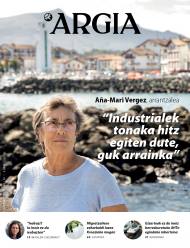

.jpg)

